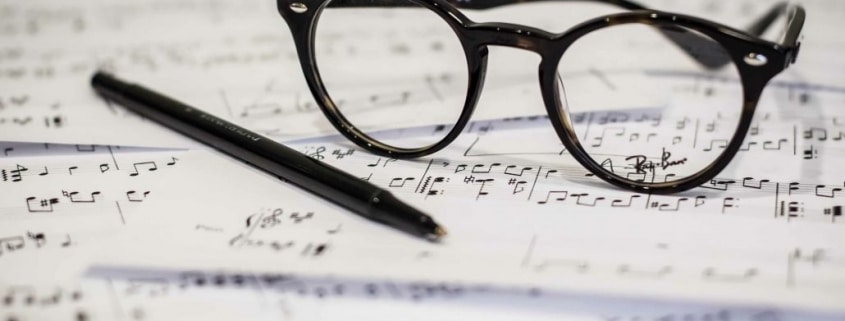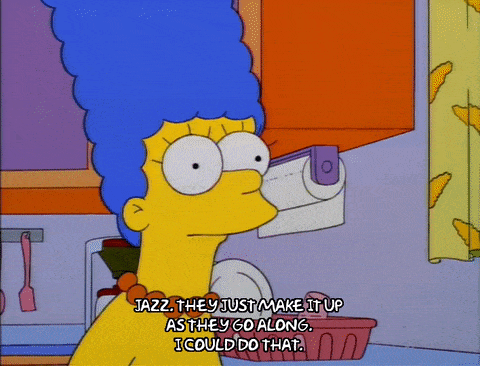7 Tips for Making Awesome Jazz Transcriptions
Making jazz transcriptions is a great way to improve your playing and understanding of jazz music.
It helps to bring improvisation ideas of top musicians into your own improvisations and you are actively engaged in learning the jazz language. In addition, it’s very good for the development of your musical ear. This is because you are concentrated on listening to the musical elements such as pitch, rhythm, dynamics and timbre (sound color).
Making jazz transcripts is not always easy. What do you need to keep in mind when making a transcription? Here are 7 tips for making awesome jazz transcriptions that you can apply immediately.
#1: Use tools to slow down the music
When you are transcribing a piece of music you will find that the recording is often too fast. This will really be a problem if there are many notes played at a high tempo. Fortunately, there are some tools to slow down the music:
- Transcribe! is probably the best-known program to slow down the music. In addition, the program has many possibilities, such as changing the pitch and looping certain sections within the track. This way you do not have to manually rewind every time. Transcribe! Is available for an affordable price.
- Audacity is a free program to record and edit music. You can also use this program to slow down music and loop certain sections, but it is not specifically intended for transcriptions.
- Youtube has a handy feature to slow down the music of videos. You simply search for a video on Youtube that you want to slow down or speed up. Then click on the control bar ‘settings’ at the rightbottom of the video. Click on ‘speed’ and now you can choose between 0.5 which is half the speed or 1.0 which is the normal speed.
#2: Take your time to listen!
Making a transcription can be a real challenge. Finding the right notes of a particular solo or the right rhythm can take hours before you get it right. That’s why you really need to take your time.
Do not just listen to which notes are played, but also to how the notes are being phrased. Phrasing is the way in which a musical sentence is articulated. This allows you to get a lot of information and a better understanding of the musician that you are transcribing.
In the long run, this process will go faster because you train your musical ear. Transcribing will be easier the more you do it.
Also read my article: Transcribing: What Is It and Why Should You Do It?
#3: Listen to the bass tones and tonality
Determining the tonality can greatly help you when finding out a piece of music. By doing this in an early stage, you can understand the rest of the piece much better. You find the tonality by listening carefully to the bass tones that determine the foundation of the harmony.
Make sure you have a good sound system, so that all bass tones are easily hearable. Another possibility is to use headphones.
#4: Make use of a notation program to notate transcriptions
Of course it’s fine to notate your transcriptions on paper, but it works much faster if you use a notation program. In addition, you can immediately listen back to the work you have done. This is useful, for example, if you want to find a complicated rhythm. You can convert the recorded music to midi or audio files and print it directly. There are many different notation programs, but the most well-known are Sibelius and Finale.
Also, this immediately looks a lot more professional. You will definitely impress the audience with your own transcription.
#5: Check if it is feasible
Before you start making a transcription, it’s a good idea to see if it’s at all feasible what you want to transcribe. In some cases it’s just too much work or almost impossible to do. So be sure you can do it.
For example, a very long piece of music or an unclear recording. In this situation, you can always consider making a shorter or adapted transcription of the piece of music.
#6: Provide an ergonomic work environment
Making a transcription can sometimes be a demanding task. Often you have been focused on listening and writing for a long time. Always take care of an ergonomic work environment. Here are some tips to keep in mind:
- Position your chair so that you are in a straight position behind the computer or piano. It can help to lean backwards in a greater angle than 90 °.
- Put your shoulders in a relaxed position and try not to pull them up.
- Make sure both feet are comfortably placed on the ground. The position of your feet ensures that your body and posture are in balance.
- Use a long headphone cable when working with headphones. This way you do not have to turn your head in order to keep in a good position. As a result, you reduce neck problems and work more efficiently.
- Take a break regularly. It can really do well to walk for a moment after 50 minutes, move a bit and give your eyes and ears some rest. Drink or eat something. It is advisable to do something completely different during the break.
#7: Be critical, but not too critical
Of course, it’s good to be critical of your work, but being too critical can delay everything unnecessarily. Sometimes the recording is unclear and then you can not hear everything right. First, try working on the simpler sections and wait with the difficult sections. You can always pay attention to this later.
It’s almost impossible to transcribe something perfectly with just a sound recording. Making amazing jazz transcriptions is not always at your fingertips. But with some experience you will notice that you will get closer every time!
What do you think of this article and these tips? Do you use them already?
I would like to hear from you in the comments below!






Leave a Reply
Want to join the discussion?Feel free to contribute!